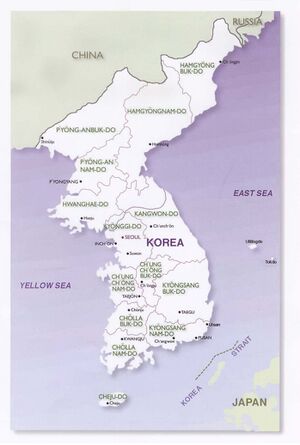XO Korea/Introduction/XO Service: Difference between revisions
| Line 49: | Line 49: | ||
==== Research Architecture ==== |
==== Research Architecture ==== |
||
We have classified all research fields in Korea into about 150,000 categories, and allocate One Moodle Server for each field. So, there will be about 150,000 virtual or real servers for R&D activities in Korea. |
|||
The Research Division of XO Service is in charge of managing those about 150,000 categories. |
|||
For the deployment plan in detail, see [[XO_Korea/Research/Introduction]]. |
|||
==== Public Architecture ==== |
==== Public Architecture ==== |
||
===Maintaining national mesh network=== |
===Maintaining national mesh network=== |
||
Revision as of 06:15, 28 April 2007
XO Service is an organization to provide XO related services such as replacing XO or developing/translating Activities. That is; Because XO is a very robust machine, we don't expect frequent repair services and don't prepare a national wide service centers. As each school and other organizations deploying XOs will have some extra machines (maybe 100:1 ratio), it may be enough to collect damaged XOs once a month national wide.
The main focus of XO Service is on developing activities, writing content, and establishing frameworks and architectures, not to mention of maintaining National Mesh Network. We hope there will be about 50,000,000 XO and its variations in Korea in 3~5 years. Service plans for XO is set on this estimation.
Distributing XOs
Fortunately for Korean people, Shanghai China is very near to the Korean peninsula, only about 500 km on the sea. Therefore, the XO logistic cost of Korea will be the lowest among all over the world except China itself, which will not deploy XO.
Among 50,000,000 units of XO and its variations, we estimate about 7,000,000 XOs and about 23,000,000 Larger XOwill be exported from China, and the other about 13,000,000 XO Smartphone will be produced in Korea. As each XO and its peripherals will weigh about 1.5 kg, the shipping cost for the total weight of 15,000,000 kg (15,000 tons) will be added to the price of each XO unit. Maritime transportations between Shanghai, China and major ports in Korea are;
- Shanghai <-> Incheon
- Shanghai <-> Mokpo
- Shanghai <-> Busan
Replacing damaged XOs
XO Service will collect damaged XOs on a regular basis such as biweekly or monthly, and send them to Quanta for reassembly. Because Korea has well established logistic systems, it is not necessary to establish another logistic system for XO only. At present, it is difficult to estimate how many XOs will be damages among 100 or 1,000 units. We are now contacting a few logistic companies to get lowest but stable transportation services, and expect the very company distributing XOs will take in charge of collecting them also.
Developing Activities (Applications)
XO Korea will just support and participate in Activity Developers' Communities.
Establishing frameworks and architectures: OEA - Open Enterprise Architecture
Maybe, these are the peculiar tasks of XO Korea, establishing OEA. Briefly speaking, OEA is open source FEA, enterprise architecture not just for the USA, but for all nations worldwide. The purpose of OEA is;
- to establish common framework for developing applications,
- to automate repetitive office works,
- for citizens to participate in software engineering, programming, and debugging activities,
- for developers to share codes, DB, and systems etc, and;
- for citizens to monitor the workflow of each division/function via the web in real time.
Ultimately, our OEA is expected to increase the labor productivity of Korea more than twice the present.
Governmental Architecture
There are about 1,000,000 governmental employees in Korea, and XO Korea will provide about 1,000,000 Larger XOs and about 10,000 Governmental Servers for governmental organizations. Those Governmental Servers will host some OEA applications for governmental services.
For this purpose, we have classified all governmental services into more than 80,000 functions provided by 150,000+ hierarchical sections. We hope to establish a Complete Virtual Government which supplements (rather than substitute) the real Korean government. Anyone will be able to monitor, to participate in, and to debug all governmental activities in real time.
See XO_Korea/Central_Government/Introduction for details.
Business Architecture
There are about 23,000,000 private employees in Korea, and, approximately, XO Korea will provide 13,000,000 Larger XOs, 10,000,000 XO Smartphones, and about 130,000 Business Servers for private entities. Those Business Servers will host some OEA applications for business services. See labors.
For this purpose, we have classified all business services into more than 150,000 functions provided by 300,000+ hierarchical sections. We hope to establish a Complete Virtual Business Entities which supplements (rather than substitute) the real business entities. Anyone will be able to monitor, to participate in, and to debug all business activities in real time. However, our approach to business sections is different from that to governmental sections. We are Really establishing about 300,000 business entities on the web (exactly specking, on Business Servers) to which everyone can participate in as CEO, CFO, officers, and floor workers etc. They will produce real products and services, sell them, and make profits. Even more, shares and debts issued by those entities are expected to be traded in Open Exchange.
See XO_Korea/Business/Introduction for details.
Educational Architecture
We completely agree to the constructionists' ideas. All we should do is just to establish an environment for children to learn learning with minimum interference. The core of the environment is, we think, a library, not a normal one but quite a new one. The content below is about this new library system we are establishing. It's Moodle. Currently there are about 30,000 large or small schools and colleges in Korea for about 17,000,000 students. As we estimate One School Server for One Hundred Students, we needs about 170,000 School Servers.
For the deployment plan in detail, see XO_Korea/Education/Introduction.
Research Architecture
We have classified all research fields in Korea into about 150,000 categories, and allocate One Moodle Server for each field. So, there will be about 150,000 virtual or real servers for R&D activities in Korea.
The Research Division of XO Service is in charge of managing those about 150,000 categories.
For the deployment plan in detail, see XO_Korea/Research/Introduction.

